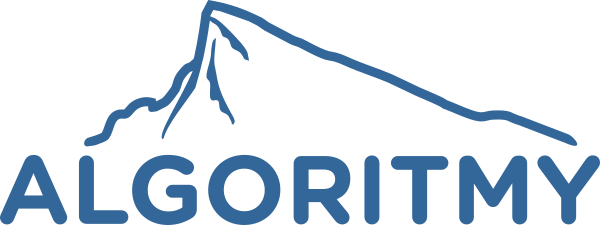Dictionary learning with the K-SVD algorithm for recovery of highly textured images - an experimental analysis
Main Article Content
Abstract
Image recovery by dictionary learning is of potential interest for many possible applications. To learn a dictionary, one needs to solve a minimization problem where the solution should be sparse. The K-SVD formalism, which is a generalization of the K-means algorithm, is one of the most popular methods to achieve this aim. We explain the preprocessing that is needed to bring images into a manageable format for the optimization problem. The learning process then takes place in terms of solving for sparse representations of the image batches. The main contribution of this paper is to give an experimental analysis of the recovery for highly textured imagery. For our study, we employ a subset of the Brodatz database. We show that the recovery of sharp edges plays a considerable role. Additionally, we study the effects of varying the number dictionary elements for that purpose.
Article Details
How to Cite
Köhler, A., Breuß, M., & Shabani, S.
(2024).
Dictionary learning with the K-SVD algorithm for recovery of highly textured images - an experimental analysis.
Proceedings Of The Conference Algoritmy, , 264 - 273.
Retrieved from http://www.iam.fmph.uniba.sk/amuc/ojs/index.php/algoritmy/article/view/2199/1051
Section
Articles
References
[1] Brodatz’s texture database. website: https://www.ux.uis.no/~tranden/brodatz.html.
[2] M. Aharon, M. Elad, and A. Bruckstein. K-SVD: An algorithm for designing overcomplete dictionaries for sparse representation. IEEE Transactions on Signal Processing, 54(11):4311–4322, November 2006.
[3] Michal Aharon, Michael Elad, and Alfred M. Bruckstein. On the uniqueness of overcomplete dictionaries, and a practical way to retrieve them. Linear Algebra and its Applications, 416(1):48–67, 2006. Special Issue devoted to the Haifa 2005 conference on matrix theory.
[4] Dennis Bontempi. KSVD. GitHub: https://github.com/denbonte/KSVD, 2018.
[5] Phil Brodatz. Textures: A Photographic Album for Artists and Designers. Dover books on art, graphic art, handicrafts. Dover Publications, 1966.
[6] Kai Cao, Eryun Liu, and Anil K Jain. Segmentation and enhancement of latent fingerprints: A coarse to fine ridgestructure dictionary. IEEE transactions on pattern analysis and machine intelligence, 36(9):1847–1859, 2014.
[7] Michael Elad. Sparse and redundant representations: from theory to applications in signal and image processing. Springer Science & Business Media, 2010.
[8] Kjersti Engan, Sven Ole Aase, and John Håkon Husøy. Multi-frame compression: Theory and design. Signal Processing, 80(10):2121–2140, 2000.
[9] Allen Gersho and Robert M Gray. Vector quantization and signal compression, volume 159. Springer Science & Business Media, 2012.
[10] Raja Giryes and Michael Elad. Sparsity-based poisson denoising with dictionary learning. IEEE Transactions on Image Processing, 23(12):5057–5069, 2014.
[11] Sylvain Lesage, Rémi Gribonval, Frédéric Bimbot, and Laurent Benaroya. Learning unions of orthonormal bases with thresholded singular value decomposition. In Proceedings. (ICASSP’05). IEEE International Conference on Acoustics, Speech, and Signal Processing, 2005., volume 5, pages v–293. IEEE, 2005.
[12] Michael S Lewicki and Terrence J Sejnowski. Learning overcomplete representations. Neural computation, 12(2):337–365, 2000.
[13] Liyan Ma, Lionel Moisan, Jian Yu, and Tieyong Zeng. A dictionary learning approach for poisson image deblurring. IEEE Transactions on medical imaging, 32(7):1277–1289, 2013.
[14] Bruno A Olshausen and David J Field. Emergence of simple-cell receptive field properties by learning a sparse code for natural images. Nature, 381(6583):607–609, 1996.
[15] Ron Rubinstein, Michael Zibulevsky, and Michael Elad. Efficient Implementation of the K-SVD Algorithm Using Batch Orthogonal Matching Pursuit. CS Technion, 40, April 2008.
[16] Joel Aaron Tropp. Topics in sparse approximation. The University of Texas at Austin, 2004.
[17] Shiming Xiang, Gaofeng Meng, Ying Wang, Chunhong Pan, and Changshui Zhang. Image deblurring with coupled dictionary learning. International Journal of Computer Vision, 114:248–271, 2015.
[18] Qiang Zhang and Baoxin Li. Dictionary learning in visual computing. Springer Nature, 2022.
[2] M. Aharon, M. Elad, and A. Bruckstein. K-SVD: An algorithm for designing overcomplete dictionaries for sparse representation. IEEE Transactions on Signal Processing, 54(11):4311–4322, November 2006.
[3] Michal Aharon, Michael Elad, and Alfred M. Bruckstein. On the uniqueness of overcomplete dictionaries, and a practical way to retrieve them. Linear Algebra and its Applications, 416(1):48–67, 2006. Special Issue devoted to the Haifa 2005 conference on matrix theory.
[4] Dennis Bontempi. KSVD. GitHub: https://github.com/denbonte/KSVD, 2018.
[5] Phil Brodatz. Textures: A Photographic Album for Artists and Designers. Dover books on art, graphic art, handicrafts. Dover Publications, 1966.
[6] Kai Cao, Eryun Liu, and Anil K Jain. Segmentation and enhancement of latent fingerprints: A coarse to fine ridgestructure dictionary. IEEE transactions on pattern analysis and machine intelligence, 36(9):1847–1859, 2014.
[7] Michael Elad. Sparse and redundant representations: from theory to applications in signal and image processing. Springer Science & Business Media, 2010.
[8] Kjersti Engan, Sven Ole Aase, and John Håkon Husøy. Multi-frame compression: Theory and design. Signal Processing, 80(10):2121–2140, 2000.
[9] Allen Gersho and Robert M Gray. Vector quantization and signal compression, volume 159. Springer Science & Business Media, 2012.
[10] Raja Giryes and Michael Elad. Sparsity-based poisson denoising with dictionary learning. IEEE Transactions on Image Processing, 23(12):5057–5069, 2014.
[11] Sylvain Lesage, Rémi Gribonval, Frédéric Bimbot, and Laurent Benaroya. Learning unions of orthonormal bases with thresholded singular value decomposition. In Proceedings. (ICASSP’05). IEEE International Conference on Acoustics, Speech, and Signal Processing, 2005., volume 5, pages v–293. IEEE, 2005.
[12] Michael S Lewicki and Terrence J Sejnowski. Learning overcomplete representations. Neural computation, 12(2):337–365, 2000.
[13] Liyan Ma, Lionel Moisan, Jian Yu, and Tieyong Zeng. A dictionary learning approach for poisson image deblurring. IEEE Transactions on medical imaging, 32(7):1277–1289, 2013.
[14] Bruno A Olshausen and David J Field. Emergence of simple-cell receptive field properties by learning a sparse code for natural images. Nature, 381(6583):607–609, 1996.
[15] Ron Rubinstein, Michael Zibulevsky, and Michael Elad. Efficient Implementation of the K-SVD Algorithm Using Batch Orthogonal Matching Pursuit. CS Technion, 40, April 2008.
[16] Joel Aaron Tropp. Topics in sparse approximation. The University of Texas at Austin, 2004.
[17] Shiming Xiang, Gaofeng Meng, Ying Wang, Chunhong Pan, and Changshui Zhang. Image deblurring with coupled dictionary learning. International Journal of Computer Vision, 114:248–271, 2015.
[18] Qiang Zhang and Baoxin Li. Dictionary learning in visual computing. Springer Nature, 2022.

